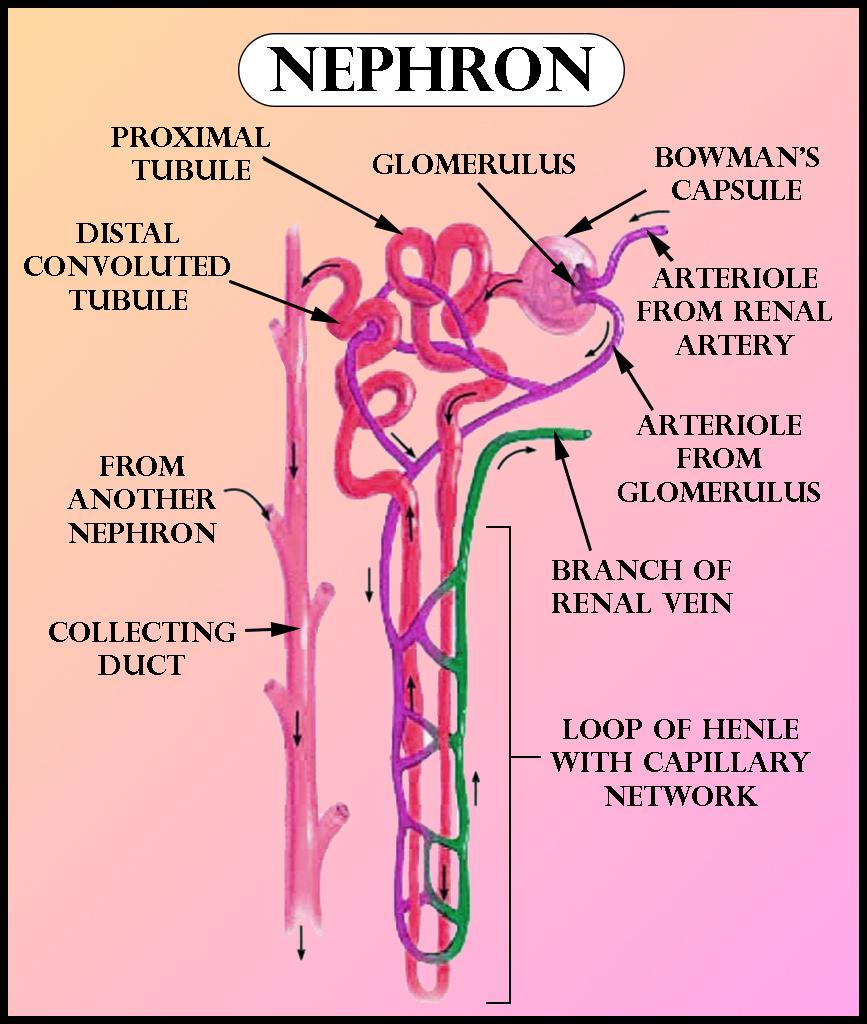
Part of nephron that opens into collecting duct is
(a)DCT
(b)Henle's loop
(c)Glomeruli
(d)Bowman's capsule
Answer
502.2k+ views
Hint: The part of the nephron which opens into the collection duct is located between Henle 's loop and the collecting tubule. While this section is the shortest segment of the nephron, spanning just around 5 mm in length in humans, it plays a critical role in a number of homeostatic processes including reabsorption of sodium chloride, potassium secretion, and regulation of calcium and magnesium.
Complete answer:
The kidney's structural and functional structure is the nephron. Its body is divided into the renal corpuscle, the proximal tubule (PCT), the loop of Henle and the distal tubule (DCT). Many nephron distal convoluted tubules open into a straight tube called a collecting duct. Therefore DCT is a part of the nephron which opens up to collecting duct.
Additional Information: Each nephron consists of the following components:
Bowman's capsule is the first component of the nephron that initially filters blood (to form filtrate).
The proximal convoluted tubule is the folded structure attached to the capsule of the Bowman, where selective reabsorption takes place.
Henle's Loop is a selectively permeable loop descending into the medulla and creating a salt gradient. The primary role of Henle 's loop is the recovery of urine water and sodium chloride.
Distal convoluted tubule is a folded structure that is connected to the Henle loop where further selective reabsorption takes place.
So, the correct answer is, 'DCT'.
Note: The final two components of the kidney nephron are the distal convoluted tubule (DCT) and the collecting duct (CD). They have a significant role in absorbing several ions, and in reabsorbing water. Upon passing through Henle 's thick ascending limb, the filtrate reaches the distal convoluted tubule, a duct of the renal tubule situated within the cortex of the kidney that reabsorbs certain ions such as calcium, sodium, and chloride and also controls the pH of urine by secreting protons and absorbing bicarbonate. The hormone aldosterone mediates the absorption of sodium through the distal tubule.

Complete answer:
The kidney's structural and functional structure is the nephron. Its body is divided into the renal corpuscle, the proximal tubule (PCT), the loop of Henle and the distal tubule (DCT). Many nephron distal convoluted tubules open into a straight tube called a collecting duct. Therefore DCT is a part of the nephron which opens up to collecting duct.
Additional Information: Each nephron consists of the following components:
Bowman's capsule is the first component of the nephron that initially filters blood (to form filtrate).
The proximal convoluted tubule is the folded structure attached to the capsule of the Bowman, where selective reabsorption takes place.
Henle's Loop is a selectively permeable loop descending into the medulla and creating a salt gradient. The primary role of Henle 's loop is the recovery of urine water and sodium chloride.
Distal convoluted tubule is a folded structure that is connected to the Henle loop where further selective reabsorption takes place.
So, the correct answer is, 'DCT'.
Note: The final two components of the kidney nephron are the distal convoluted tubule (DCT) and the collecting duct (CD). They have a significant role in absorbing several ions, and in reabsorbing water. Upon passing through Henle 's thick ascending limb, the filtrate reaches the distal convoluted tubule, a duct of the renal tubule situated within the cortex of the kidney that reabsorbs certain ions such as calcium, sodium, and chloride and also controls the pH of urine by secreting protons and absorbing bicarbonate. The hormone aldosterone mediates the absorption of sodium through the distal tubule.

Latest Vedantu courses for you
Grade 9 | CBSE | SCHOOL | English
Vedantu 9 CBSE Pro Course - (2025-26)
₹ per year
Recently Updated Pages
Master Class 11 Business Studies: Engaging Questions & Answers for Success

Master Class 11 Accountancy: Engaging Questions & Answers for Success

Master Class 11 Computer Science: Engaging Questions & Answers for Success

Master Class 11 English: Engaging Questions & Answers for Success

Master Class 11 Social Science: Engaging Questions & Answers for Success

Master Class 11 Economics: Engaging Questions & Answers for Success

Trending doubts
Which one is a true fish A Jellyfish B Starfish C Dogfish class 11 biology CBSE

State and prove Bernoullis theorem class 11 physics CBSE

1 ton equals to A 100 kg B 1000 kg C 10 kg D 10000 class 11 physics CBSE

In which part of the body the blood is purified oxygenation class 11 biology CBSE

One Metric ton is equal to kg A 10000 B 1000 C 100 class 11 physics CBSE

Difference Between Prokaryotic Cells and Eukaryotic Cells




